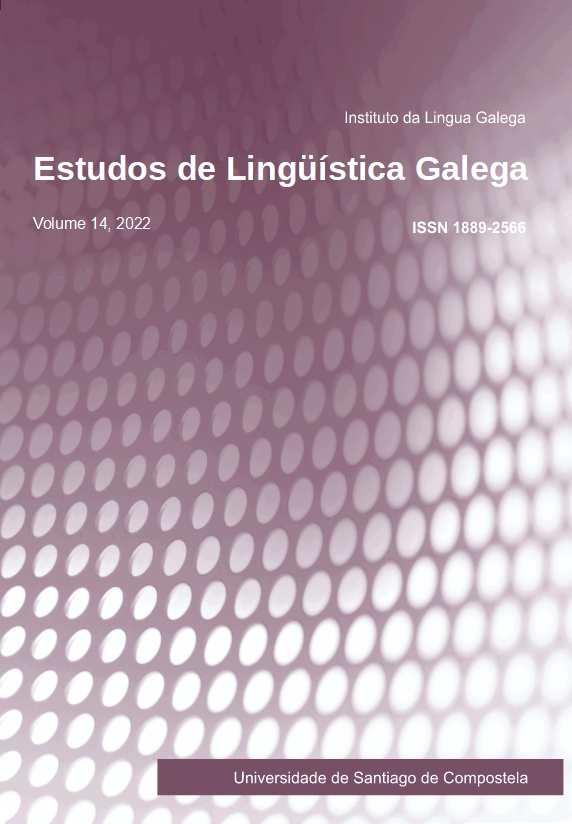Sign languages in Spain: status and territoriality
Main Article Content
Abstract
The purpose of this article is to present the situation of sign languages in the context of Spanish language policy, both at the state level and at the autonomous comunities level. The state and regional legislation that regulates to some extent the use of these languages is reviewed. The normative development of sign languages (SL) faces two challenges in Spain: one has to do with the incorrect belief that SLs are adaptations to facilitate accessibility for the Deaf, rather than natural languages used in a specific social and cultural context. The second challenge arises from the territorial conception of linguistic rights. Only Catalan Sign Language and Spanish Sign Language are recognized in the higher-level normative text, the first in Catalonia and the second in the rest of the state, while the Autonomous Communities have authority to recognize sign languag- es of their own territories. In the Galician case, an in- terview with the President of the Federation of Galician Deaf People has led us to conclude that recognition of a Galician Sign Language is not a priority for this repre- sentative body.
Keywords:
Article Details
References
Alonso Baixeras, Pilar et al. (2003): Libro Blanco de la Lengua de Signos Española en el Sistema Educativo. S.l.: CNSE. Disponible en línea: http://www.fundacioncnse.org/imagenes/Las%20portadas/pdf/libro_blanco.pdf [19/07/2017].
Baker-Shenk, Charlotte L. / Dennis Cokely (1980): American Sign Language: A Teacher’s Resource Text on Grammar and Culture. Washington, D.C: Gallaudet University Press.
Caamaño, Francisco (2015): “¿Justicia sin lenguas o lenguas sin justicia?”, Revista Catalana de Dret Públic 50, 42-56. http://doi.org/10.2436/20.8030.01.43.
Caamaño Hermida, Andrés (2008a): As nosas mans: Revista de Lingua de Signos en Galego 1. http://www.lingua.gal/o-galego/promovelo/equipos-de-dinamizacion-da-lingua-galega/recursos-didacticos?content=/Portal-Lingua/Contido/recursos/equipos-dinamizacion/conti-do_0788.html [24/02/2018].
Caamaño Hermida, Andrés (2008b): As nosas mans: Revista de Lingua de Signos en Galego 2. http://www.lingua.gal/o-galego/promovelo/equipos-de-dinamizacion-da-lingua-galega/recursos-didacticos?content=/Portal-Lingua/Contido/recursos/equipos-dinamizacion/contido_0788.html [24/02/2018].
Cabeza Pereiro, María del C. / Fernando Ramallo (2016): “Lenguas de signos y educación en España: Una aproximación desde la comunidad sorda”, Language Problems and Language Planning 40 (1), 1-25. http://doi.org/10.1075/lplp.40.1.01cab
De Meulder, Maartje (2015): “The Legal Recognition of Sign Languages”, Sign Language Studies 15 (4), 498-506. http://doi.org/10.1353/sls.2015.0018.
De Meulder, Maartje (2017): “Promotion in times of endangerment: the Sign Language Act in Finland”, Language Policy 16(2), 189-208. http://doi.org/10.1007/s10993-016-9403-5.
Esteban, María Luz et al. (2015a): Propuesta básica de formación universitaria de intérpretes de lengua de signos española y guías-intérpretes de personas sordociegas. Madrid: CNLSE; Real Patronato sobre Discapacidad. http://www.siis.net/documentos/documentacion/Propuesta%20basica%20de%20formacion%20universitaria.pdf [19/07/2017].
Esteban, María Luz et al. (2015b): Informe sobre el perfil profesional del especialista en lengua de signos española. Madrid: CNLSE; Real Patronato sobre Discapacidad.
Ferreiro, Emilio / Eva Aroca (2008): “Cambio cultural, normalización lingüística de la lengua de signos española”, en Antonio Moreno Sandoval (ed.), El valor de la diversidad (meta)lingüística: Actas del VIII Congreso de Lingüística General. [S. l.: s.n.], 690-700. http://www.lllf.uam.es/clg8/ [19/07/2017].
González Abelaira, Cristina (2016): “Unha lingua de signos galega?”, Estudos de Lingüística Galega 8, 89-106. doi:10.15304/elg.8.3065. http://www.usc.es/revistas/index.php/elg/article/view/3065 [11/04/2017].
González Abelaira, Cristina (2017): Planificación lingüística de la lengua de signos en el ámbito educativo de la comunidad autónoma de Galicia: perspectivas histórica y émica. Universidade de Santiago de Compostela. Tesis de doctorado inédita.
Hiddinga, Anja / Onno Crasborn (2011): “Signed languages and globalization”, Language in Society 40 (4), 483-505.
Jarque, Maria Josep (2012): “Las lenguas de signos: Su estudio científico y reconocimiento legal”, Anuari de Filologia. Estudis de lingüística 2, 33-48.
Liñares Barbeito, Xosé L. (2003): “Apuntes para una sociología de la comunidad sorda”, Educación y Biblioteca 138, 50-61.
López García-Molins, Ángel (2012): “La política lingüística del estado”, en Henrique Monteagudo (ed.), Linguas, sociedade e política. Un debate multidisciplinar. Santiago de Compostela: Consello da Cultura Galega, 171-196.
Marco, Jaime / Sagrario Matéu (2003): Libro blanco sobre hipoacusia. Detección precoz de la hipoacusia en recién nacidos. Madrid: CODEPEH; Ministerio de Sanidad y Consumo. https://www.msssi.gob.es/profesionales/saludPublica/prevPromocion/maternoInfantil/docs/hipoacusia.pdf [19/07/2017].
Massone, María I. / Alejandro Fojo (2011): “Problemática de la estandarización en las lenguas de señas del Río de la Plata”, en Luis E. Behares (comp.), V Encuentro Internacional de Investigadores de Políticas Lingüísticas. Montevideo: Asociación de Universidades Grupo Montevideo, 83-89.
McRae, Kenneth D. (1975): “The Principle of Territoriality and the Principle of Personality in Multilingual States”, International Journal of the Sociology of Language 4, 33-54. http://doi.org/10.1515/ijsl.1975.4.33.
Mitchell, Ross E. / Michael A. Karchmer (2004): “Chasing the mythical ten percent: Parental hearing status of deaf and hard of hearing students in the United States”, Sign Language Studies 4 (2), 138-163.
Morales, Esperanza (2008): “La llengua de signes com a vehicle de comunicació i de capital simbòlic”, en Àngels Massip (coord.), Llengua i identitat. Barcelona: Publicacions i Edicions de la Universitat de Barcelona, 29-36.
Parisot, Anne-Marie / Julie Rinfret (2012): “Recognition of Langue des Signes Québécoise in Eastern Canada”, Sign Language Studies 12 (4), 583-601. http://doi.org/ 10.1353/sls.2012.0013.
Parkhust, Steve / Diane Parkhust (2000): “La variación en las lenguas de signos: un estudio de causas y una metodología analítica”, en Francisco Martínez et al., Apuntes de Lingüística en Lengua de Signos Española, Madrid: CNSE, 221-246.
Quer, Josep (2012): “Legal Pathways to the Recognition of Sign Languages: A Comparison of the Catalan and Spanish Sign Language Acts”, Sign Language Studies 12 (4), 565-582. http://doi.org/10.1353/sls.2012.0012.
Ramallo, Fernando (2013): “Lenguas de España: territorios, educación, políticas e ideologías”, en Francisco Moreno-Fernández / Fernando Ramallo, Las lenguas de España a debate. Valencia: Uno y cero ediciones, 12-45.
Romaine, Suzanne (2008): “The Bilingual and Multilingual Community”, en Tej K. Bhatia / William C. Ritchie (eds.), The Handbook of Bilingualism. Londres: Blackwell, 385-405.
Sertucha Lista, Iker (2016): “La atención a la diversidad: ¿nuestra asignatura pendiente?”, en Mª. Dolores Fernández Tilve / Gonzalo Francisco Fernández Suárez (coords.), La escuela de ayer, hoy y mañana. Claves y desafíos. Madrid: Dykinson, 117-126.







